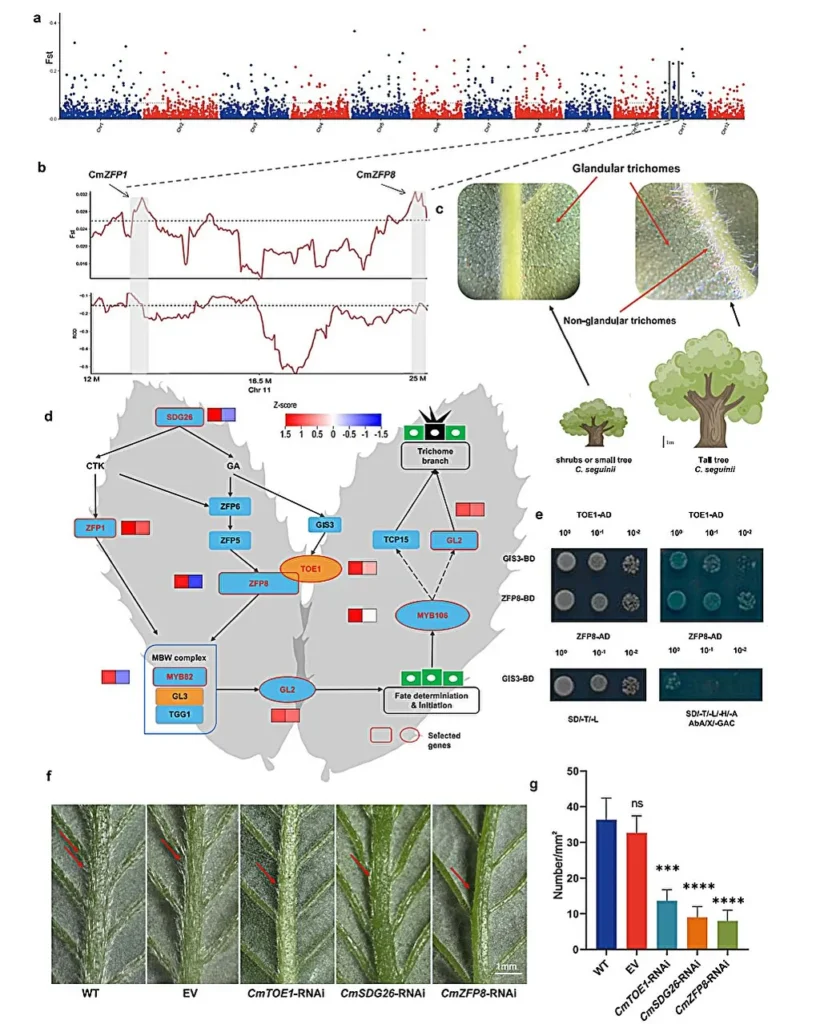In the lush, subtropical forests of East Asia, a group of evergreen trees has been quietly adapting to the rhythmic dance of the East Asian Summer Monsoon (EASM) for millions of years. Now, a groundbreaking study led by Min Li from the Plant Phylogenetics and Conservation Group at the Xishuangbanna Tropical Botanical Garden, Chinese Academy of Sciences, has unveiled the genomic secrets behind these trees’ remarkable resilience. The research, published in the journal Plant Diversity (translated as “Plant Diversity”), offers a glimpse into the intricate evolutionary dynamics of the Engelhardia genus and its response to climatic shifts, with potential implications for the energy sector.
The study focused on the evergreen Engelhardia species, a group of trees that have thrived in the subtropical evergreen broad-leaved forests (EBLFs) of East Asia. By sequencing and comparing the genomes of five closely related Engelhardia taxa and one Rhoiptelea species, the researchers discovered that the divergence of evergreen trees from their deciduous relatives is closely tied to the onset and intensification of the EASM.
One of the most striking findings was the expansion of the terpene synthase (TPS) gene family in Engelhardia fenzelii. Terpenes are organic compounds that play a crucial role in plant defense mechanisms, and their increased production in E. fenzelii suggests an adaptive response to the unique environmental challenges posed by the EASM. “This expansion enhances the biosynthesis of terpene volatiles, providing a defensive mechanism against potential herbivory in EASM-affected environments,” explained Li.
The researchers also identified a shared whole-genome duplication (WGD) event across the Engelhardia genus, along with significant differences in transposable element (TE) composition and activity. These genomic variations contribute to the differences in genome size between E. fenzelii and E. roxburghiana, highlighting the complex evolutionary dynamics at play.
Demographic analyses revealed a continuous population decline in Engelhardia species over the past 10 million years, exacerbated by recent human disturbance. This underscores the urgent need for conservation efforts to protect these ecologically and economically important trees.
The findings of this study not only shed light on the evolutionary history of the Engelhardia genus but also provide valuable insights into the adaptive mechanisms of EBLFs in response to climatic shifts. As the world grapples with the impacts of climate change, understanding how these forests have adapted to past environmental changes can inform conservation strategies and guide the development of more resilient ecosystems.
For the energy sector, the insights gleaned from this research could have significant implications. Engelhardia species are known for their high-quality timber and potential for bioenergy production. By understanding the genomic basis of their adaptability, researchers can potentially develop more resilient and productive tree species for sustainable forestry and bioenergy applications.
As Li noted, “Our results provide preliminary insights into the complex evolutionary dynamics within the Engelhardia genus and the intricate relationships between genomic variations, environmental changes, and adaptive responses driven by significant climatic events such as the EASM.” This research not only advances our understanding of plant evolution but also paves the way for innovative approaches to conservation and sustainable resource management in the face of a changing climate.

